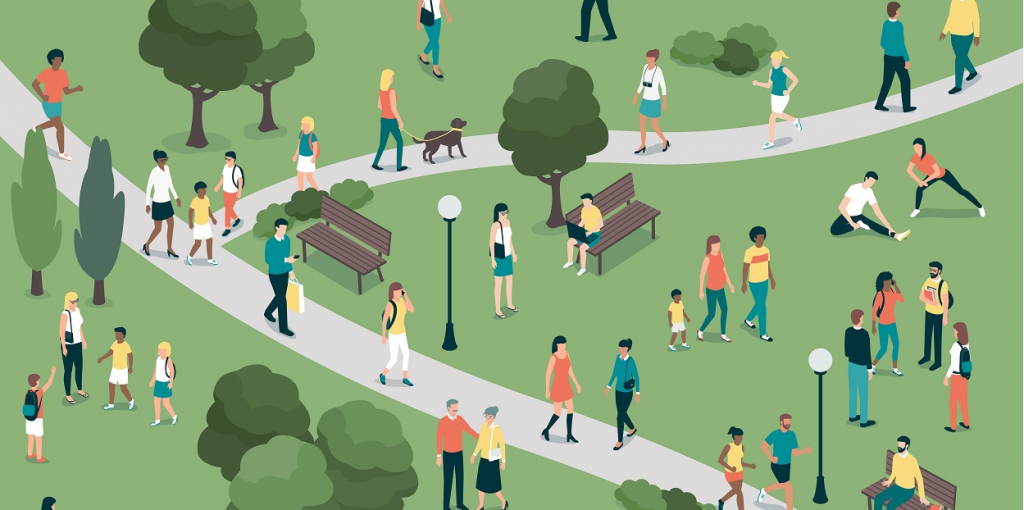
You can tell a lot about a community by the state of its parks. No parks? That says something. Neglected or dangerous parks? A clue that residents are struggling to raise healthy families.
We tend to think that the state of the neighborhood dictates the state of its parks. But what if the reverse were true? What if improving parks could, in turn, lift up the community– and without displacing families?
The participants in SPARCC’s first Virtual Learning Conversation– Equitable Development of Parks and Urban Open Space– came from all sides of the issue, including community activists, regional planners, parks officials, and environmental and social justice advocates. They answered a call to “break out of our silos” to talk about the linkages between racial justice, parks, and urban space, as host Odetta MacLeish-White of Atlanta’s TransFormation Alliance, put it.
Keynoter Dr. Hanaa Hamdi, a national health and social impact investment strategist, gave a stark example– that of Mildred Helms Park in Newark, N.J., which became a catalyst for improved health and economic opportunity when invested stakeholders came together in a neglected neighborhood.
As Hamdi noted, parks offer much more than recreation, with studies showing that green, open spaces used well can decrease crime and violence, serve as opportunities to create jobs and businesses, improve social interactions and have profound effects on individual and community health, combating obesity and social isolation, and helping in healthy child development.
Hamdi noted that among the benefits of an urban farm at Mildred Helms Park were the creation of local jobs and the production of healthy produce for local preschoolers.
“If a small park is able to spur economic development for a small community, imagine what large parks can do,” she said.
Of course, with beautiful parks comes the potential for “green gentrification” and displacement of long-time residents. But, as the Virtual Learning Conversation showed, a key to combating that outcome is to focus on people and community needs.
“If you plan parks for people, then the history of people should also be prioritized. In planning and parks, that history hasn’t been good for people of color.”
Dr. Hanaa Hamdi
VLC participants saw concrete examples of success by the Los Angeles Regional Open Space and Affordable Housing (LA ROSAH) collaborative in combating green gentrification in Chinatown and Northeast Los Angeles, where some of the city’s poorest residents live and where homelessness is at crisis levels. Through an assessment process, and with funding related to public investment along the LA River, the city is beginning to think about parks in a different way and inequities are being addressed.
Learn more about LA ROSAH’s work and the story behind the partnership between local nonprofits, and regional, national and local government agencies, in the video VLC presentation:
The VLC audience also heard insightful “snapshots” of work in five of the SPARCC regions and Pittsburgh – an exchange designed to spark deep and long-lasting connections among SPARCC sites.
You can also watch the first half of the video with Dr. Hanaa Hamdi, Parks, Open Space, and Racial Justice.
For more materials click: